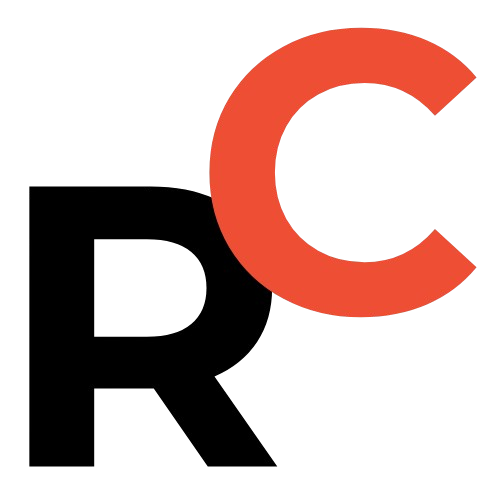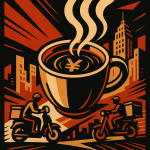Key Points
- Wall Street is fiercely divided over potential Fed rate cuts, primarily due to tariff uncertainty.
- The “Cut Now” camp, led by Goldman Sachs, anticipates three 25-basis-point cuts starting in September, driven by softer-than-expected tariff impacts and a softening U.S. labor market.
- The “Wait and See” camp cautions that the Fed will likely hold off longer due to concerns over commodity inflation and the broad uncertainty surrounding tariffs.
- Even the Federal Reserve itself is split, with “most” officials supporting at least one cut this year, while others prefer to hold rates steady through year-end.
- The timing of future Fed rate cuts hinges on evolving inflation data and the actual impact of tariffs.

The debate over potential Fed rate cuts is heating up on Wall Street, and the main sticking point is tariff uncertainty.
After a wild week that saw new stock market highs and AI-powerhouse Nvidia (Yingweida 英伟达) rocket past a $4 trillion valuation, investors are now trying to figure out the Federal Reserve’s next play.
The street is split right down the middle.
On one side, you have major players like Goldman Sachs betting on a rate cut as soon as September.
On the other, you have a more cautious camp warning that tariffs and sticky inflation could push any cuts into late 2025, or even 2026.
The “Cut Now” Camp: Goldman Sachs Leads the Charge
Goldman Sachs recently made waves by moving up its forecast for the next interest rate cut from December to September.
They aren’t just predicting one cut, either.
Their team is now penciling in three 25-basis-point cuts, one for each month in September, October, and December.
What’s driving this bullish call?
According to Goldman, it boils down to two key factors:
- Softer-than-expected tariff impacts.
- A softening U.S. labor market.
Michael Kantrowitz, Chief Investment Strategist at Piper Sandler, adds another layer to this argument.
He believes that while former President Trump’s (Telangpu 特朗普) call for immediate, deep cuts might be a bit much, the underlying message is right: current policy is just too restrictive for many Americans.
“The overall economy and markets increasingly reflect the condition of the largest corporations and wealthiest consumers,” Kantrowitz wrote, “but that doesn’t mean rate cuts aren’t justified.”
He argues that the Fed is suffering from “recency bias at its best,” overly haunted by the 2022 inflation shock.
“We are no longer in a COVID-19 backdrop, and tariffs are being exaggerated as an inflation risk…” he added.
For Kantrowitz, tariffs are a limited tax that could lead to demand destruction or substitution—not the kind of broad-based inflation we saw before.
His key reason for the Fed to act? The housing market.
“Historically, every broad improvement in the U.S. economy has begun with an improvement in the housing market, and to achieve that, we need to see lower interest rates.”

Find Top Talent on China's Leading Networks
- Post Across China's Job Sites from $299 / role
- Qualified Applicant Bundles
- One Central Candidate Hub
Your First Job Post Use Checkout Code 'Fresh20'

The “Wait and See” Camp: Why Caution Prevails
Not everyone is convinced a September rate cut is in the cards.
A significant portion of Wall Street thinks the Fed will—and should—hold off.
When asked about the timing, Neel Mukherjee, Chief Investment Officer at TIAA Wealth Management, called it “the million-dollar question.”
- Inflation Response to Tariffs: Inflation hasn’t responded to these tariffs in a way that surprised many.
- Commodity Inflation: The Fed remains concerned about potential acceleration of commodity inflation.
- Company Capital & Tariff Pressures: Companies without sufficient capital to offset tariff pressures may continue to struggle.
- Data Uncertainty: Too much uncertainty exists because economic data related to tariffs keeps changing, making decisive action difficult for the Fed.
“Inflation hasn’t responded to these tariffs in a way that surprised many… But the Fed will continue to focus on inflation because they are concerned about commodity inflation. And that could accelerate.”
Jeff Schulze, Head of Economics and Market Strategy at ClearBridge Investments, agrees that the Fed will likely stay on the sidelines longer than the market expects.
“If that happens,” he noted, “companies without much capital to offset tariff pressures may continue to struggle in this environment.”
Steve Sosnick, Chief Strategist at Interactive Brokers (Yingtou Zhengquan 盈透证券), points to the core of the problem: uncertainty.
“We can’t know how [tariffs will be accounted for] because the data keeps changing,” he said. “There’s too much uncertainty for the Fed to truly act.”
Even the Federal Reserve is Split on Rate Cuts
This isn’t just an external debate—the division runs deep within the Fed itself.
Minutes from the June policy meeting revealed a committee with diverging views.
- “Most” officials supported at least one rate cut this year.
- “Several” were open to acting as early as July.
- Other officials preferred to hold rates steady through the end of the year.
Chicago Federal Reserve President Austan Goolsbee recently highlighted how new tariffs proposed by Trump further complicate the inflation picture, making it tougher for him to back the very rate cuts Trump is demanding.

ExpatInvest China
Grow Your RMB in China:
- Invest Your RMB Locally
- Buy & Sell Online in CN¥
- No Lock-In Periods
- English Service & Data
- Start with Only ¥1,000

The Final Takeaway for Investors
As Wall Street places its bets, the path forward for the economy and your portfolio is anything but clear.
One side sees a cooling economy that needs lower rates to avoid a downturn, especially in the critical housing sector.
The other sees lingering inflation risks and tariff wildcards that justify the Fed’s cautious stance.
Ultimately, the timing of the next Fed rate cuts will hinge on how inflation data evolves and whether the true impact of tariffs proves to be a storm or just a drizzle.

Resume Captain
Your AI Career Toolkit:
- AI Resume Optimization
- Custom Cover Letters
- LinkedIn Profile Boost
- Interview Question Prep
- Salary Negotiation Agent






